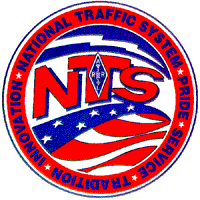 NTS Introduction
NTS Introduction NTS Introduction
NTS IntroductionThanks to Gary, W2CS, for providing us with this nice write-up of the NTS from an introductory viewpoint. It is written to address a few points on checking into nets as a 'newcomer'.
"The manual" is the NTS Methods and Practices Guidelines (MPG) that is on the ARRL web site It is an excellent, though exhaustive, treatise on message handling and flow in the NTS.
There is a hierarchy of nets. Local, section, region, area - with TCC skeds or digital ops between areas. Both local and section nets exist for traffic delivery and originations. All nets exist for operator training for times of need. Traffic flows in both directions up and down the NTS net structure as needed. So, yes, you could check into a section net or a local net to originate your traffic. The destination of that traffic determines where it goes next.
So anyone can, and is encouraged to, check into a local or section net. Stations checking into region or area nets generally are appointed to that role by the net manager of the lower net. For example a Second Region Net (2RN) liaison station to Eastern Area Net (EAN) would be appointed that role by the 2RN manager. While some nets run those appointment rather loosely, that is the way the NTS was designed to run. So, in a literal sense, you should, as a newcomer to traffic, feel absolutely free to check into a local or section net, ask for assistance as needed, and be part of it all. As you gain skills and hopefully interest you can approach the section net manager and ask if there are any openings for liaison work to 2RN and go from there. In NY we are blessed to have quite a few local nets with their own inter-net arrangements for local traffic flow.
That's a great place to start.
NTS runs as a system both in the day and evenings on just about every mode. For historical reasons the section nets and above in the evening tend to run on CW (there are exceptions) and those during the day on phone (again with exceptions) with digital operations 24x7.
Local nets tend to run on VHF/UHF.
(Republished with permission for the Hudson Valley NET homepage)
Updated 2/25/2011
All original material on this page is copyrighted ©2006-2011 by Hudson Valley Net.
Use on other NTS or Amateur Radio webpages is allowable provided appropriate (including our URL, www.hvnet.org) is given. Likewise, we thank those whose materials we've incorporated on our page with their permission as well.
(BT)